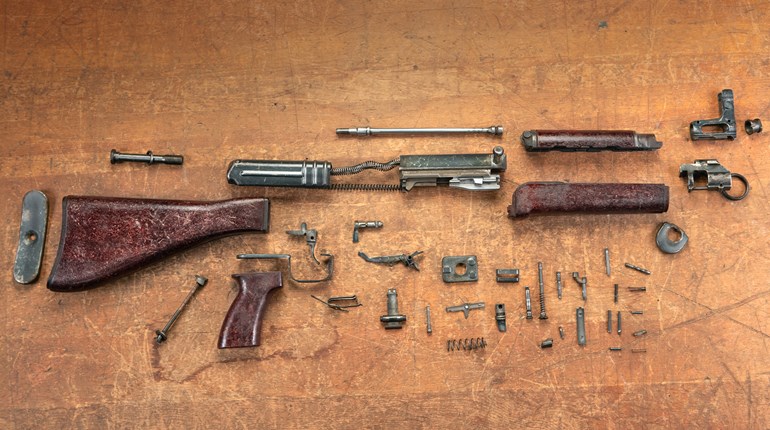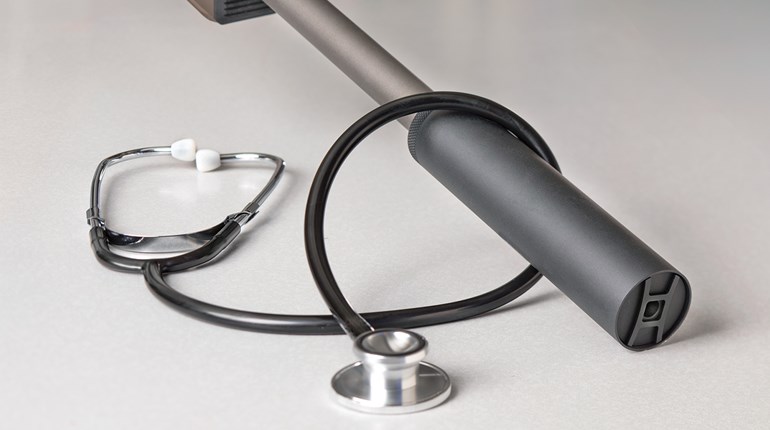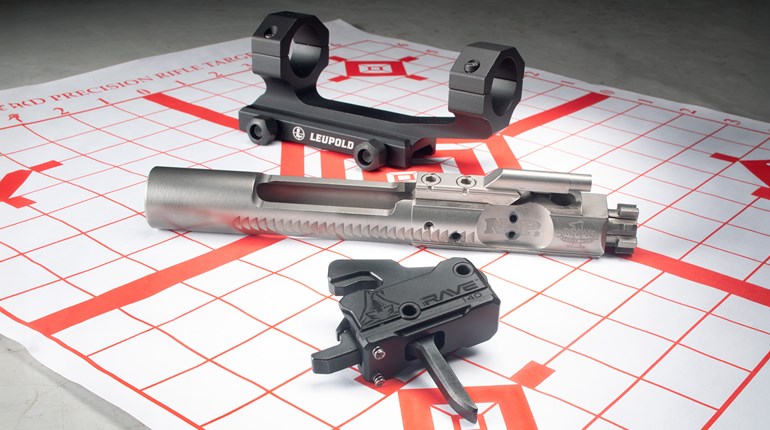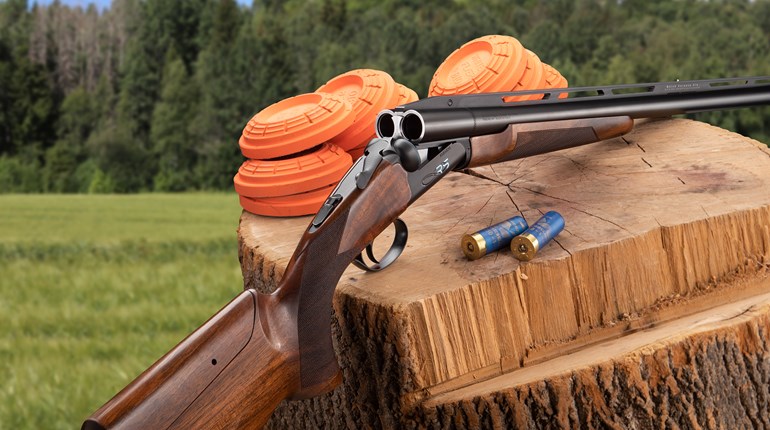
This article, "The Eyes Have It," appeared originally as a Rifles column in the August 2017 issue of Shooting Illustrated. To subscribe to the magazine, visit the NRA membership page here and select Shooting Illustrated as your member magazine.
Every so often an old myth about the relationship between cross-eye dominance and rifle shooting pops up. Its premise is that if your weak-side eye is dominant—i.e. a right-handed shooter who is left-eye dominant or vice versa—you should automatically switch over to the opposite hand and shoulder. For some reason this gem of wisdom persists like kudzu on a sunny south-Georgia hillside. I got my first taste of it (the myth, not the kudzu) while sitting on one of those hillsides in Army Basic Training a little more than three decades ago.
During our first of many “Basic Rifle Marksmanship” training sessions, the Drill Instructor had us all perform a simple finger-tip/eye dominance test in order to determine whether we would shoot our M16A1s right- or left-handed. My heart skipped a beat when I discovered that I was right-eye dominant even though I had been shooting as a lefty my whole, young life. Drill Sergeant Happy-Guy then proceeded to walk through the ranks as each of us did the test for him. He barked out “Right-handed” or growled the occasional “Left-handed," as if knighting us for time eternal. I was not about to switch hands so I lied and made out like my left eye was dominant. I sailed through rifle qualification in Basic and every time thereafter, so the ruse worked out OK for me.
But is there an occasion when it actually does make sense to switch to the non-dominant shooting hand if you are cross-eye dominant? Switching sides may be necessary if you need to shoot with both eyes open, as in competitive shooting or close-quarters-battle with open sights. It is typically not a problem when using optics, because in most cases only the strong [shooting]-side eye is aligned with the optic to see the aiming point. Open sights are more troublesome, though, because the weak-side eye—dominant in this case—usually sees the front sight, too, but offset from the actual sight-to-target line.
The brain has to reconcile which sight image to use in milliseconds, and for some shooters this can cause problems. I had a job that for many years required me to do regular CQB with various guns and optics, and on occasion my rifles wore only iron sights. There is no question that having both eyes open is the best way to maintain situational awareness in these dynamic combat environments. The more you see, the better the chance of detecting and eliminating a threat before it eliminates you, and the better you can see things and people you do not want to shoot.
You have three choices when you have cross-eye dominance in this situation: Close the dominant eye (opposite your strong shooting side) so that only the non-dominant eye sees anything, switch your shooting to the weak-hand/dominant eye side or train your non-dominant eye to be dominant. I took the last approach by retraining my brain to ignore the dominant-eye image and instead give prominence to the non-dominant eye image when both eyes are open. I have no idea if optically educated folks or the expert-shooter class would condone my method, but I stopped worrying about such things a long time ago. I used this technique through a great deal of real-world CQB and I’m still here to write about it, so I know it works. But, practice is required to get to the point where you don’t have to think about which sight image to use under pressure. You can practice on the range, during dry fire or simply with your finger out in front of your face, but using the strong shooting side/weaker eye image has to be an automatic process before you rely on it in a pinch.
Another scenario that may point toward switching hands is if you find you simply shoot better off the weak side. One of my sniper teammates discovered—after being in the Army for 10 years—he was left-eye dominant as a right-handed shooter. It turned out he shot much better as a lefty, so he switched his longarm shooting to the left side, but kept shooting handguns righty. I know other rifle shooters who have experienced the same thing. Switching over to the dominant eye side made sense for them because it made them better marksmen. I know quite a few others who like me, shoot better with their non-dominant eye and their strong-side hand and shoulder. There is no cut-and-dry rule, but it is worth trying the other hand and shoulder to see if your shooting improves if you are cross-eye dominant.
While closing the dominant eye would seem to be the easiest solution for cross-eye dominance, some people find they simply cannot do this. Closing their dominant eye makes them close the non-dominant eye, either partially or completely. For most folks, though, closing off the dominant eye allows them to continue to train without the frustration of placing shots on their neighbor’s target.
My Drill Sergeant had a lot of fun at my expense during Basic Training. He took particular joy in attempting to make my elbows explode from endless pushups or having me roll around in the mud, then demanding my fatigues be spotless within the hour. I won the moral victory in the end, though. Not only did I covertly retain my southpaw tendencies, but I went on to master every long and short arm I laid hands on, took top honors in SF Sniper School and sent a whole lot of copper-jacketed “love letters” to our nation’s enemies during the years that followed. In my case at least, refusing to be dominated translated to shooting well.




































